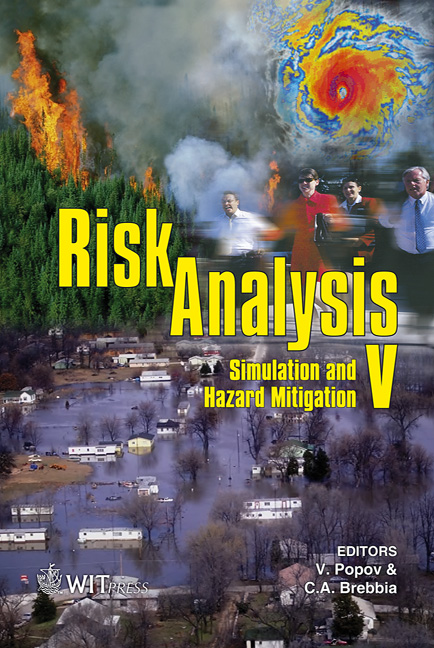Evaluation Of Hazard Distribution In Network Structures
Price
Free (open access)
Transaction
Volume
91
Pages
7
Published
2006
Size
823 kb
Paper DOI
10.2495/RISK060341
Copyright
WIT Press
Author(s)
J. Augutis, R. Krikstolaitis, V. Matuzas & E. Uspuras
Abstract
The subject of this work is the analysis of hazard distribution in the network systems. In the age when transport flows in the railway and road systems, information flows in the internet channels, etc. the intensity and hazard distribution in the network systems becomes a more relevant and important issue. In this paper various theoretical hazard type distributions in the network systems are analysed. A mathematical model of hazard distribution and accumulation in the nodes of the network was created. Theoretical results are illustrated by simulation of hazard fuel transportation on Lithuanian roads. It is shown that using this methodology it is possible to construct an algorithm, which enables one to operate and decrease fuel transportation hazard and risk. Keywords: hazard, distribution, risk assessment, network systems. 1 Introduction Hazard in risk analysis is defined as a feature or characteristic of material, technological process, information, human activities or other phenomena that specifies a potential possibility of endangering human life, health, nature, buildings, equipment, etc. Some illustrations of hazards could be poisonous chemical substances kept in stock, open source of radiation, a car with brakes that are out of order, a lock that is built on a river that flows through a city, etc. In this work we will use numerical values for the hazard, such as the quantity of poisonous materials, the quantity or flow of hazardous information, etc. calling these characteristics hazard level or, in some cases, simply hazard.
Keywords
hazard, distribution, risk assessment, network systems.





